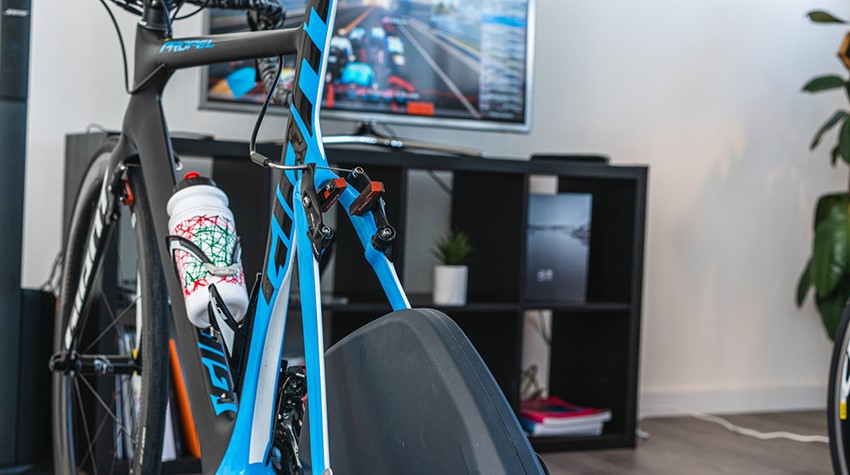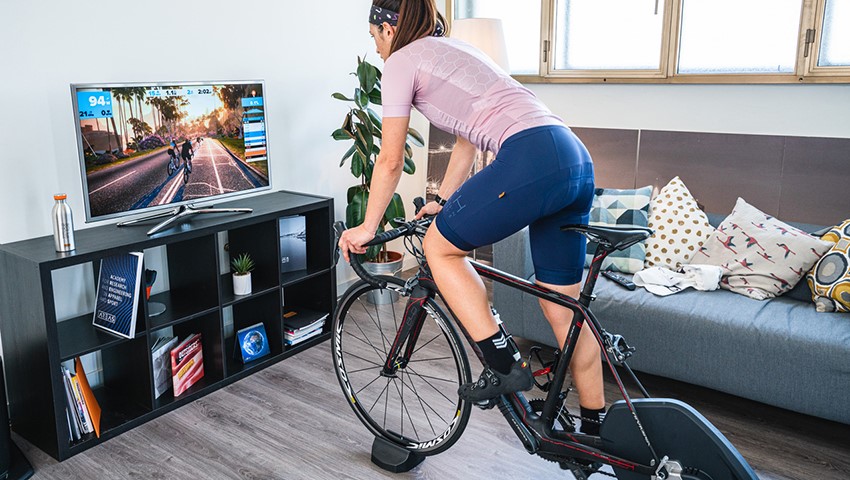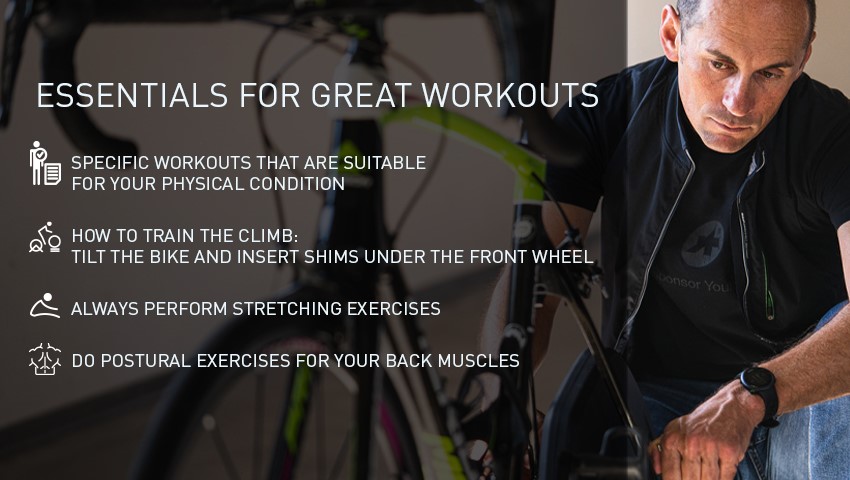
HOW TO OPTIMIZE INDOOR TRAINING
[ssbp]In the first part of the mini guide, we discussed what the precautions are for performing an indoor workout. In part 2, we ask the experts their thoughts on optimizing a functional and preparatory training for outdoor cycling.
We sit down with Denis Bertoldo (R&D Manager in Elastic Interface®), Dr. Giuseppe Marcolin (Department of Biomedical Sciences of the University of Padua) and Dr. Andrea Fusaz (CCC Team athletic trainer and biomechanical owner of the CTF Lab) for some expert advice.
Does training on an indoor trainer help prepare you for outdoor cycling? What are the advantages and disadvantages of indoor vs outdoor training?
Denis Bertoldo: Indoor training is certainly useful especially in times of lockdowns, or when the weather does not allow you to go out. In winter preparation, many cyclists follow programs with specific exercises in the gym and / or free body, sometimes making some calls even during the season. The indoor trainer can be an integral part of training when outdoor cycling is not ideal. But it should be designed according to the physical condition of the athlete.
The riding posture follows the type of bike used. However, the rigidity of the indoor trainer also changes. What are the consequences for the body?
Dr. Giuseppe Marcolin: The trainer does not allow lateral movements of the bicycle. Indeed the posture in terms of joint angles does not change when pedaling on the trainer, but the lack of lateral oscillations both when seated on the saddle and especially when lifting off the saddle result in less activation of the deep muscles, back muscles and the core. In practice, the cyclist takes a more relaxed attitude on the trainer. The postural control component is missing due to the fact that the bike is fixed in place.
DB: As for the stiffness of the trainer, it all depends on the model. For those with the most technologically advanced system, i.e. without a rear wheel and carriage fixed directly to the trainer, the movements are very limited. Even the frame is subjected to considerable stress. It maybe useful to insert pieces of foam at the base of the trainer to make it “softer”.
When you get up on the pedals, the pedaling becomes more static. Will the bike not following the athlete’s natural movement affect performance?
DB: Surely the movements on the trainer are not as natural as on the road. During a demanding climb you have to push well even if you are bound to always maintain a composed position. Greater static means greater pressure in the perineal area, often felt after 45 minutes of exercise on average. This also depends on the intensity and type of training. A slight inclination of the saddle could bring relief without affecting the positioning on the bike.

Do I have to vary the intensity of indoor workouts?
Dr. Andrea Fusaz: In most cases the power peaks reached on the road are not reached on the trainer for both physical and especially mental reasons. The indoor trainers are always more tiring than the road, but in principle, the exercise intensities are not changed. However, a special training plan must be studied, because the volumes of aerobic exercises done on the road are not sustainable on indoor trainers.
What are your tips for a PRO workout?
AF: If you do workouts in which you have to simulate a large part of climbing, you can tilt the bike by inserting shims under the front wheel. It seems a bit strange, but the biomechanics of pedaling also changes as the slope changes. If you have to prepare yourself for some slopes, you can certainly try this hack.
What other exercises can be done to compensate for physical effort and to maintain the muscles?
GM: It is advisable to perform stretching exercises after a session on the trainer just as much as finishing a workout on the road. It is advisable to include in the training week a couple of 30-minute sessions of postural / proprioceptive workouts together with exercises to strengthen the core and back muscles. Finally, a good warm-up should not be underestimated if you dedicate yourself to specific jobs.
In a few points, expert tips for functional training and preparatory to outdoor outings include the following:
- Perform specific workouts that are suitable for the athlete’s physical condition
- Tilt the bike, inserting shims under the front wheel, during the session to train the climb
- Perform stretching exercises even after a short session on the trainer
- Do postural exercise sessions to strengthen the back muscles

About indoor training, we invite you to read the first part of our guide. Ready to find expert advice on nutrition and health? See you on the nextarticle! #tobecontinued
Finally, this is the link for CTFLab’s website.